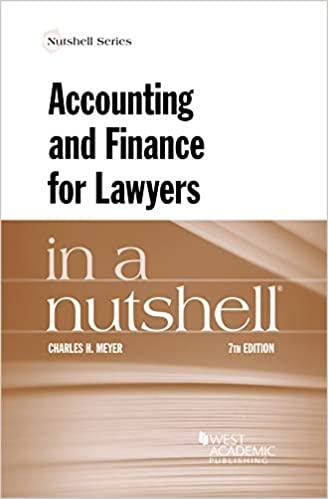Question
QUESTION 9 C and D organized Z Corporation 10 years ago, each contributing $40,000 and each receiving 400 shares of common stock. Five years ago,
QUESTION 9
-
C and D organized Z Corporation 10 years ago, each contributing $40,000 and each receiving 400 shares of common stock. Five years ago, in June, Z declared a one for one dividend payable in pure preferred with a $400 fair market value. The value of the common stock after the distribution was $1,600 per share. In that year, five years ago, Z had accumulated E&P of $52,000 and current E&P of $12,000. In the current year, Z has accumulated E&P of $112,000 and current E&P of $8,000. In December of the current year, C sells all of his preferred stock to E for $36,000. In June of that same year, C had previously sold all of his common stock to F for $200,000. E is Cs son.
Same facts as Question 7, except in the current year Z redeems all of Cs preferred stock in exchange for $36,000.
a. 306 does not apply to this transaction. The entire $36,000 is ordinary income.
b. 306 does not apply to this transaction. Of the redemption proceeds, $32,000 is ordinary income.
c. 306 does not apply because of the complete termination of the preferred stock interest.
d. None of the above.
2 points
QUESTION 10
-
Z owns a rental building (its only asset) with a gross fair market value of $5,000 subject to the non-recourse mortgage of $2,000. Zs adjusted basis for this building is $1,500. All of Zs stock is owned by C, whose basis for his stock in Z is $500. Z had 1,000 of E&P. Z is on the accrual method of accounting and reports on the calendar year. Assume that the corporate tax payable by Z on $3,500 gained is $735 and on $3,000 gained is $630. Z sells the building, subject to the mortgage, to D in the current year for $3,000 in cash. Z then liquidates, distributing all of the cash (remaining after paying its taxes) to C in cancellation of Cs stock in the current year.
a. Zs gain on the sale of the building is $1,500.
b. Zs E&P goes over to purchaser, D, if D is a corporation.
c. Section 331 treats C as selling its stock to Z.
d. None of the above
Step by Step Solution
There are 3 Steps involved in it
Step: 1

Get Instant Access to Expert-Tailored Solutions
See step-by-step solutions with expert insights and AI powered tools for academic success
Step: 2

Step: 3

Ace Your Homework with AI
Get the answers you need in no time with our AI-driven, step-by-step assistance
Get Started


